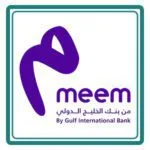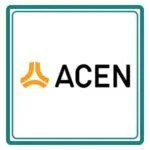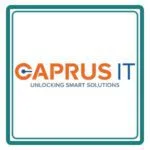ISO 14001 Certification in Nairobi
Get Free Consultation
ISO certifications are a key driver for businesses in Nairobi aiming to achieve operational excellence and build trust with clients. These globally recognized certifications demonstrate a company’s commitment to quality, safety, and environmental sustainability, providing a competitive edge in the market. Strengthen your environmental practices with ISO 14001 certification in Nairobi. Expert consultants ensure a seamless, efficient process at an affordable cost.
ISO 14001 is globally acknowledged as the standard for Environmental Management Systems (EMS). It serves as a blueprint for businesses to handle and enhance their eco-performance in an efficient manner. Embracing ISO 14001 is an indication of a pledge to sustainability, caring for the environment, and ongoing growth.
ISO 14001 is based on PLAN DO CHECK ACT that’s (PDCA) cycle and requires organization to establish an Environmental Policy, by identifying the environmental aspects and impacts, set environmental objectives and targets, implement operational controls also monitor and measure the performance and continually improve the EMS.
How to Get ISO 14001 Certification in Nairobi?

Process to Get ISO 14001 Certification in Nairobi
Consultation and Gap Analysis
PopularCert’s experts evaluate your organization’s unique requirements and current systems, conducting a detailed gap analysis to identify areas needing improvement for compliance with ISO 14001 standards.
Planning, Documentation, and Policy Development
Based on the gap analysis, we create a tailored implementation plan, define necessary resources, and assist in developing required policies and documentation. These elements are seamlessly integrated into your organization’s existing environmental management framework.
Training and Awareness
We provide comprehensive training to ensure your team understands ISO 14001 requirements and their roles in maintaining an effective Environmental Management System (EMS).
Internal Audit and Management Review
Our specialists conduct internal audits to assess the EMS’s effectiveness and resolve any non-conformities. A management review ensures alignment with your organizational objectives and ISO 14001 standards.
External Certification Audit and Certification
Upon completing the external audit by an accredited certification body, your organization will be awarded ISO 14001 certification. This demonstrates your commitment to environmental sustainability, compliance with international standards, and enhanced credibility with stakeholders.
Benefits of ISO 14001 Certification in Nairobi
- Enhanced Environmental Performance: ISO 14001 helps organizations in Nairobi implement effective environmental management systems, reducing waste, pollution, and environmental impact.
- Regulatory Compliance: Certification ensures your organization meets local and international environmental regulations, avoiding legal issues and penalties.
- Cost Savings: By optimizing resource use and reducing waste, ISO 14001 certification can lower operational costs and improve efficiency.
- Improved Market Access: Demonstrating environmental responsibility enhances your organization's reputation and can open doors to new business opportunities locally and globally.
- Stakeholder Trust: Certification signals your commitment to sustainability, fostering trust and loyalty among customers, investors, and the community.
- Risk Management: An effective Environmental Management System (EMS) helps identify and mitigate environmental risks, ensuring business continuity and resilience.
- Employee Engagement: A focus on environmental responsibility improves employee morale and engagement, as teams take pride in contributing to sustainability goals.
- Competitive Edge: ISO 14001 certification distinguishes your organization in Nairobi’s competitive market, demonstrating leadership in sustainability and environmental responsibility.
Types Of ISO Certification In Nairobi
Get Free Consultation
Our Clients


















Cost to get ISO 14001 Certification in Nairobi
The cost of ISO 14001 certification in Nairobi depends on several factors, including the size of your business, the complexity of your operations, and the current state of your Environmental Management System (EMS). Smaller businesses may have lower costs, while larger organizations might require more resources for implementation and audits. Typical expenses include fees for training, gap analysis, system development, and the certification audit. While the exact cost varies, the benefits are clear: improved efficiency, reduced environmental impact, and a stronger reputation. To get an accurate estimate, reach out to a trusted ISO certification provider for a tailored quote.
Strengthen your environmental practices with ISO 14001 certification in Nairobi. Expert consultants guide you on how to get and apply for certification, ensuring a seamless, efficient process at an affordable cost.
Why choose PopularCert for ISO 14001 Certification in Nairobi?
PopularCert ensures a seamless certification process through comprehensive auditing, detailed documentation review, and actionable guidance. we help you enhance operational efficiency, reduce environmental impact, and strengthen stakeholder confidence.
Trust PopularCert. Connect with us to apply or learn more about our ISO 14001 certification services in Nairobi.
GET A FREE CONSULTATION NOW
FAQ
What is ISO 14001 certification?
ISO 14001 certification is an international standard that specifies requirements for an effective Environmental Management System (EMS). It helps organizations improve their environmental performance by reducing waste, managing resources efficiently, and complying with environmental regulations.
Why is ISO 14001 certification important?
ISO 14001 certification is important because it demonstrates your organization’s commitment to environmental sustainability. It helps reduce environmental impact, enhance reputation, and achieve compliance with legal and regulatory requirements.
How can I get ISO 14001 certification in Nairobi?
To get ISO 14001 certification in Nairobi, follow these steps:
- Conduct a gap analysis to assess your current EMS.
- Develop and implement necessary environmental management policies.
- Train your employees on ISO 14001 requirements.
- Perform internal audits and management reviews.
- Complete the certification audit by an accredited certification body.
What are the main benefits of ISO 14001 certification?
- Improved environmental performance.
- Enhanced compliance with legal and regulatory requirements.
- Reduced waste and resource consumption.
- Improved stakeholder confidence and reputation.
- Competitive advantage in the market.
